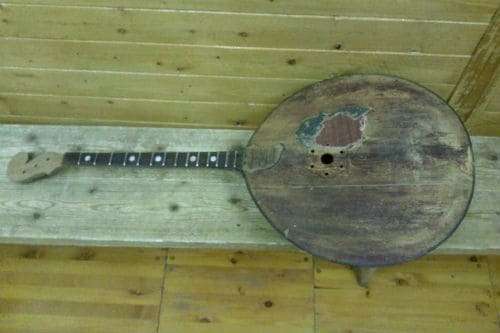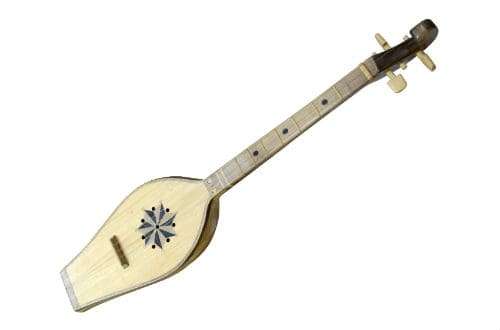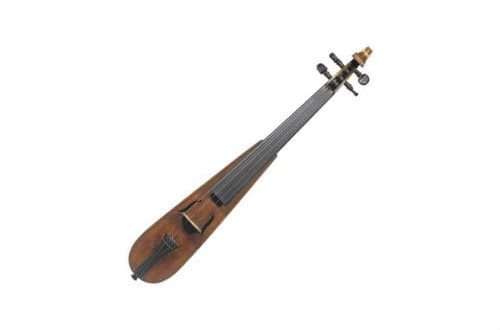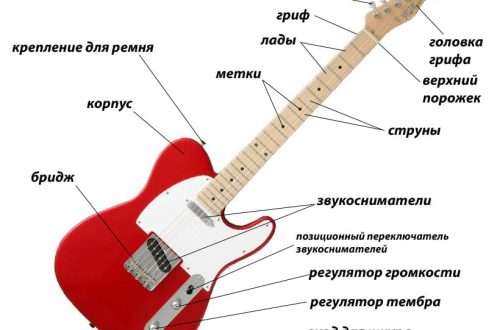
Domra: instrument composition, history, types, playing technique, use
Due to its sound, domra occupies a special place in the family of plucked strings. Her voice is gentle, reminiscent of the murmur of a stream. In the XVI-XVII centuries, domrachi were court musicians, and many people always gathered on the streets of cities to listen to the play of wandering musicians playing the domra. Having gone through a difficult period, the instrument again enters the academic group, is used to perform folk and classical music, sounds solo and as part of ensembles.
Domra device
The body in the form of a hemisphere has a flat soundboard to which the neck is attached. 3 or 4 strings are pulled on it, passing through the nut and nut. Seven resonator holes are carved in the center of the soundboard. During the Play, the soundboard is protected by a “shell” attached at the junction of the neck and soundboard. It protects against scratches. The figured head has tuning pegs according to the number of strings.
Academic classification refers domra to chordophones. If not for the round body, the domra could look like another Russian folk instrument – the balalaika. The body is also made from different types of wood. It is formed by gluing wooden strips – rivets, edged with a shell. The saddle has several buttons that fix the strings.
Interesting fact. The very first specimens were made from dried and hollowed out pumpkins.
The process of creating domra is complex. For one tool, several types of wood are used:
- the body is made of birch;
- spruce and fir are dried well to make deco;
- fingerboards are sawn from rare ebony;
- the stand is formed from maple;
- only very hard woods are used for the manufacture of the neck and hinged shell.
The sound is produced by a mediator. Its size can vary, with larger instruments larger than smaller ones. The ends of the mediator are ground on both sides, forming a chamfer. Length – 2-2,5 cm, width about one and a half centimeters.
A modern accessory, without which musicians would not be able to play the domra, is made of soft nylon or caprolon. There are also traditional picks made from tortoise shell. On the viola instrument and domra bass, a leather device is used to extract sound. Such a mediator makes the sound muffled.
History of domra
Versions about the origin of the chordophone are different. It is generally accepted that this is an instrument of the Russian, Belarusian, Ukrainian people. In Russia, he appeared in the X century, as there is written evidence. It is mentioned in the writings of the eastern scientist and encyclopedist Ibn Rust. Domra became popular in the 16th century.
Today, historians talk about the eastern origin of the musical instrument. Its structure resembles Turkic vestibules. It also has a flat deck, and during the Play, the musicians used a wooden chip, a fish bone, as a plectrum.
Different peoples of the East had their own representatives of stringed plucked instruments, which received their name: Kazakh dombra, Turkish baglama, Tajik rubaba. The version has the right to exist, domra could have got into Ancient Russia during the period of the Tatar-Mongol yoke or was brought by merchants.
The instrument may owe its origin to the lute, a European member of the plucked string family. But, if you delve into history, then it came to the west from the eastern territories.
For two centuries, domra entertained the people, was an instrument of buffoons and storytellers. Tsars and boyars had their own domrachi at court, but biting songs ridiculing character traits, life, and temper of everyone and everything often caused discontent among the nobility. In the XNUMXth century, Tsar Alexei Mikhailovich issued a decree by which he subjected buffoons to persecution, and domra disappeared along with them, the Play on which he called “demonic Plays”.

Interesting fact. Under the leadership of the Patriarch of All Russia Nikon, buffoon instruments were collected in large quantities from cities and villages, brought on carts to the banks of the Moscow River and burned. The flame burned for several days.
The chordophone was revived in 1896 by the head of the Great Russian Orchestra, musician and researcher V.V. Andreev. His balalaika ensemble lacked a leading melodic group. Together with master S.I. Nalimov, they studied the instruments that had lost popularity and designed a device that was ideally suited for playing the lyrical series. Since the beginning of the XNUMXth century, domra has become part of string ensembles, where it was of particular value.
Types of domra
This musical instrument is of two types:
- Three-string or Small – has a quart system in the range from “mi” of the first octave to “re” of the fourth. The number of frets on the fretboard is 24. This category includes alto, bass and domra-piccolo.
- Four-string or Large – the technique of playing it resembles a bass guitar, often used by modern performers. The system is in fifths, the number of frets is 30. The range is three full octaves from “sol” small to “la” fourth, supplemented by ten semitones. The 4-strings include bass domra, alto and piccolo. Less commonly used contrabass and tenor.
A rich velvety sound, a thick, heavy timbre has a bass. In the lower register, the instrument fills the bass line in the orchestra. 3-string domras are tuned in quarter intervals, the prima tuning starts with an open second string.
Play technique
The musician sits down on a half chair, slightly tilts the body forward, holding the device. He puts his right foot on his left, the bar is held by his left hand, bent at a right angle. Beginners are taught to play with a finger, not with a pick. The technique is called pizzicato. After 3-4 exercises, you can start playing as a mediator. Touching the string and pressing the strings at the desired fret with the fingers of the left hand, the performer reproduces the sound. Single or variable movement, trembling is used.
Famous Performers
Like a violin in a symphony orchestra, domra in folk music is a real prima. It is often used as a solo instrument. In musical history, venerable composers have undeservedly bypassed it. But modern musicians successfully transcribe the masterpieces of Tchaikovsky, Bach, Paganini, Rachmaninoff and add them to the chordophone repertoire.
Among the famous professional domrists, Professor of the Russian Academy of Sciences. Gnesinykh A.A. Tsygankov. He owns the creation of original scores. A significant contribution to the development of the instrument was made by R.F. Belov is the author of collections of repertoire and readers for domra.
There were not always glorious moments in the history of the national Russian folk instrument. But today a huge number of people are learning to play it, concert halls are filled with fans of rich timbre sound.





